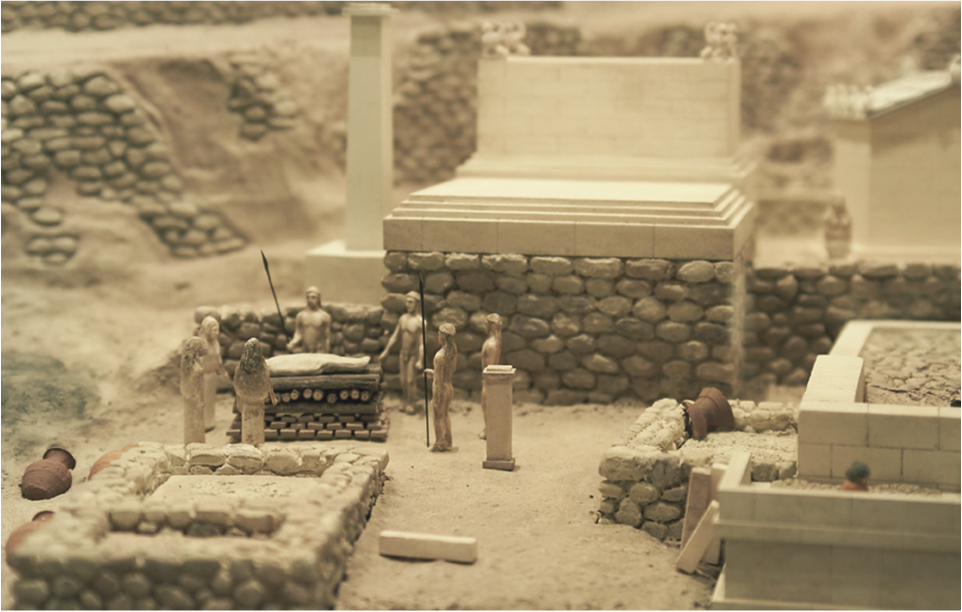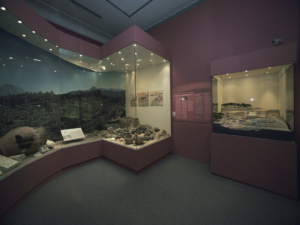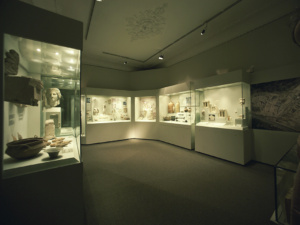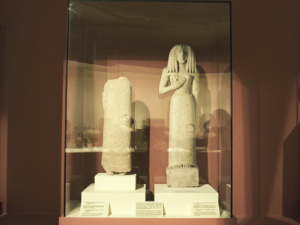Exhibitions on Eleutherna

Museum of Cycladic Art 1994
Museum of Cycladic Art 2004 – 2005
Eleutherna. Polis – Acropolis – Necropolis
This exhibition was organized by the Museum of Cycladic Art in collaboration with the Hellenic Ministry of Culture, the Twenty-fifth Ephorate of Prehistoric and Classical Antiquities, and the University of Crete as a tribute to the twenty years of systematic excavation at ancient Eleutherna. Its aim was to demonstrate the long duration of human presence in this important Cretan city from the Early Bronze Age (third millennium BC) to the Middle Ages (twelfth-thirteenth centuries AD).
The excavation finds were presented in three major sections: the Polis, the Acropolis, and the Necropolis. The first two sections examined the activities of daily life (public and private), whereas the third dealt with practices and beliefs relating to the afterlife.
Many exhibits came from the Orthi Petra cemetery, which dates to the time of the creation of the Homeric epics (ninth-seventh centuries BC). The third section included a carefully reconstructed tomb, with its contents and the funerary monument that stood over it, as well as fragments of Daedalic and Archaic sculpture and funerary stelai.
A noteworthy exhibit was the famous Lady of Auxerre, a limestone statuette of a kore or Archaic goddess. This statuette travelled from the Louvre to Athens for the first time for this exhibition. As Louvre curators Alain Pasquier and Jean-Luc Martinez explained “it would have been impossible not to allow the lady to visit her cousins from Crete”.
In addition to the explanatory texts on the walls, visitors could watch a cinematographic representation of a ‘Homeric’ funerary pyre. The exhibition was accompanied by a full scientific catalogue in Greek and English.




